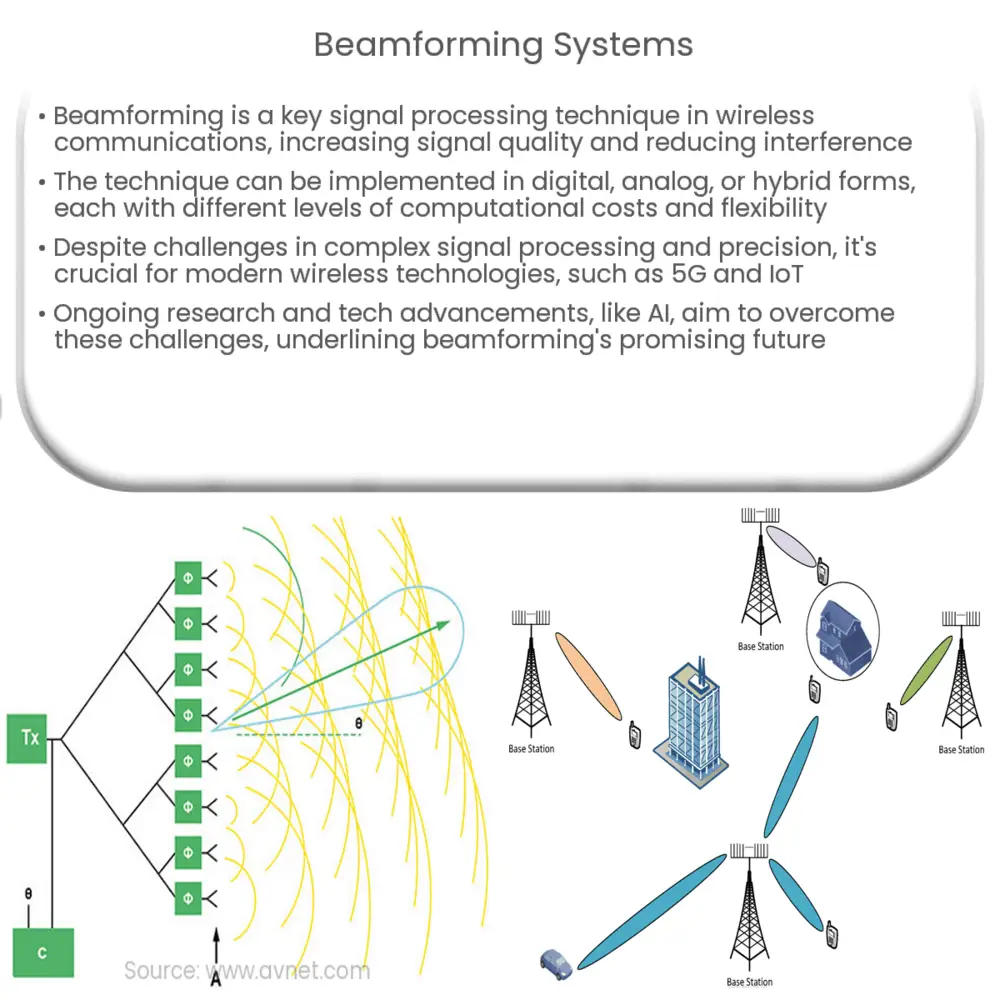Explore the fundamentals of beamforming systems, their role in wireless communication, challenges, and future prospects in this detailed article.

Introduction to Beamforming Systems
Beamforming systems constitute a vital component in wireless communications, enhancing the overall performance, reach, and quality of these networks. But what exactly is beamforming?
Understanding Beamforming
Beamforming, often referred to as spatial filtering, is a signal processing technique used in sensor arrays for directional signal transmission or reception. This method is commonly used in acoustics, radar, and wireless communication systems, utilizing the principles of constructive interference to combine signals from a group of antennas to create a ‘beam’ of radio signals.
Working Principle of Beamforming
Beamforming works by manipulating the phase (and sometimes the amplitude) of the signals from the various antennas in an array. By altering these parameters, the entire array can be directed to transmit or receive more energy in specific directions, while minimizing the signals received from undesired directions. This technique is known as directional signal transmission or reception.
Types of Beamforming
Benefits of Beamforming
Beamforming offers several significant advantages for wireless communication systems. By focusing the transmission power in the desired direction, beamforming increases the signal quality at the receiver end while reducing interference to other devices. This quality enhancement is crucial in densely populated urban environments where numerous wireless devices coexist.
Beamforming in Modern Wireless Technologies
Beamforming plays a central role in modern wireless technologies. 5G wireless technology, for instance, relies heavily on beamforming for its massive Multiple-Input and Multiple-Output (MIMO) systems, which are designed to deliver faster data rates and more reliable connections.
Challenges in Beamforming
Despite its benefits, beamforming also presents several challenges. Implementing beamforming requires complex signal processing, precise antenna synchronization, and substantial computational power, particularly in digital and hybrid beamforming systems. Furthermore, the efficiency of beamforming heavily relies on the accuracy of information about the communication channel, which may not always be readily available or accurate in dynamic environments.
Future of Beamforming
As the demand for wireless communication grows, so does the necessity for beamforming. The advancement of technologies like Internet of Things (IoT), autonomous vehicles, and smart cities, all necessitate more reliable and efficient wireless networks. Therefore, research is underway to address the challenges associated with beamforming and enhance its implementation. The development of advanced algorithms, AI-based methods, and low-cost high-performance hardware are among the promising trends in this area.
Conclusion
Beamforming systems are pivotal in shaping the future of wireless communication. They serve as the backbone for today’s advanced wireless technologies like 5G and will continue to be indispensable in the development of future technologies. Despite the challenges, the ongoing research and technological advancements promise a brighter future for beamforming. It is an exciting field with enormous potential, capable of revolutionizing our communication experiences and paving the way for a more connected world.

